The History of the 23d Fighter Group
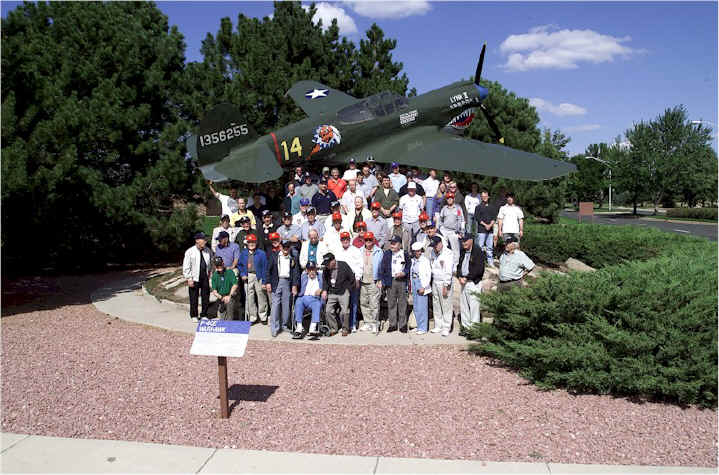
  
23d Pursuit Group
The 23d Fighter Group has a rich and illustrious history. The group traces its roots back to the 23d Pursuit Group (Interceptor), constituted at Langley Field, Virginia, December 17, 1941, just ten days after the Japanese attack on Pearl Harbor.
Not knowing its final destination, the unit boarded the converted luxury liner Brazil on March 17, 1942, at Charleston, South Carolina for a sixty-day voyage to Karachi, India. Shortly after its arrival, the unit
re-designated as the 23d Fighter Group in May 1942.
By June 15, 1942, under orders from 10th Air Force, an advance cadre of the 23d Fighter Group proceeded over the infamous "Hump" route to
Kunming, China, and without ceremony, the unit activated July 4, 1942, marking the first such activation of a fighter group on a field of battle.
Claire L. Chennault, meanwhile, had been recalled to active duty with the rank of brigadier general and placed at the head of the China Air Task Force (later to become 14th Air Force). The 23d Fighter Group, a component of the CATF, was assigned three squadrons - the 74th, 75th and 76th.
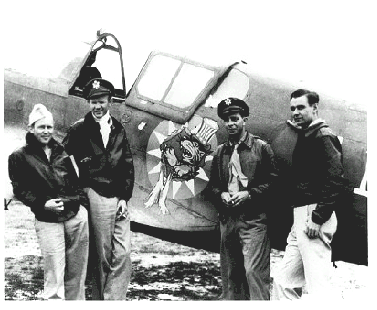 The group inherited
the mission of the disbanded American Volunteer Group "Flying Tigers." Five of Chennault's staff officers, five pilots and nineteen ground crewmen became members of the 23d Fighter Group. A larger number, still in civilian status, volunteered to fly with the group for two weeks following the disbanding of their unit. The group inherited
the mission of the disbanded American Volunteer Group "Flying Tigers." Five of Chennault's staff officers, five pilots and nineteen ground crewmen became members of the 23d Fighter Group. A larger number, still in civilian status, volunteered to fly with the group for two weeks following the disbanding of their unit.
Others from the ranks of the old Flying Tigers left China temporarily, but many returned to duty later with the Army Air Corps in the China-Burma-India theater. In addition to inheriting operational responsibilities from the AVG, the 23d Fighter Group also benefited from the knowledge and experience of the AVG pilots and took on the nickname of the disbanded unit.
Colonel Robert L. Scott, Jr., became the first commander of the 23d Fighter Group. The former AVG pilot would later author the military classic, "God Is My Co-Pilot."
On the very first day of its activation, the 23d Fighter Group engaged three successive waves of enemy aircraft and promptly recorded the destruction of five enemy aircraft with no losses. The next three years saw the 23d Fighter Group involved in much of the action over southeast and southwest Asia. It was made even more combat effective with its conversion to the North American P-51 "Mustang" aircraft in November 1943.
Representative of the heroic encounters undertaken by this small and often ill-equipped group was the defense against a major Japanese push down the Hsiang Valley in Hunan Province, June 17-25, 1944. Ignoring inhibiting weather conditions and heavy ground fire, the 23d Fighter Group provided air support for Chinese land forces and repeatedly struck at enemy troops and transportation.
Its valiant efforts in this instance earned it the Distinguished Unit Citation for "outstanding performance of duty in action against the enemy."
Before the 23d Fighter Group returned to the United States in December 1945, it accounted for the destruction of 621 enemy planes in air combat, plus 320 more on the ground. It sank more than 131,000 tons of enemy shipping and damaged another 250,000 tons. It caused an estimated enemy troop loss of more than 20,000.
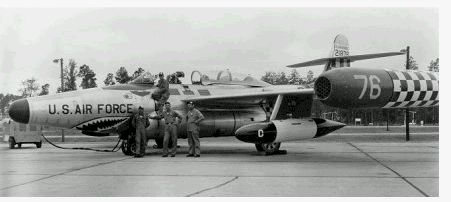 These statistics were compiled through a total of more than 24,000 combat sorties, requiring more than 53,000 flying hours and a cost of 110 aircraft lost in aerial combat. Ninety were shot down by surface defenses and 28 were bombed while on the ground. These statistics were compiled through a total of more than 24,000 combat sorties, requiring more than 53,000 flying hours and a cost of 110 aircraft lost in aerial combat. Ninety were shot down by surface defenses and 28 were bombed while on the ground.
When the 23d Fighter Group was inactivated January 5, 1946, at the Fort Lewis Staging Area in Washington, it was only after achieving a tradition of excellence in combat. It had also given rise to the names of many who would rank among the greatest in the annals of air warfare.
Reactivations, re-designations
The Flying Tiger story did not end with World War II. The 23d Fighter Group reactivated on October 10, 1946, in Guam, and was assigned to the Far East Air Forces (20th Air Force), equipped with Republic P-47 "Thunderbolt" aircraft.
The group moved to Howard Air Force Base, Canal Zone, in April 1949. It was given a complement of Lockheed RF-80 "Shooting Star" aircraft to supplement its P-47 aircraft. The 23d Fighter Group was charged with an air defense mission under the Caribbean Air Command until it again inactivated on September 24, 1949.
When activated once again on January 12, 1951, the unit was
re-designated the 23d Fighter-Interceptor Group and assigned to Presque Isle Air Force Base, Maine, under the Air Defense Command. It was equipped with North American F-86 "Sabre," P-51 "Mustang" and F-80 "Shooting Star" aircraft. Its mission was to provide air defense for the northeastern United States.
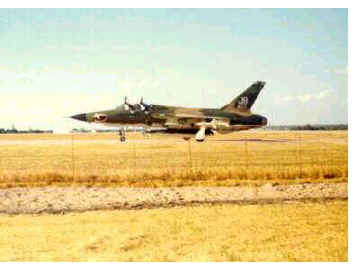 Although still retaining two of the three original permanently assigned squadrons - the 74th and 75th - the group lost the 76th, which remained on inactive status. It was also during this period that the group conducted basic training for about 500 Air Force recruits. Although still retaining two of the three original permanently assigned squadrons - the 74th and 75th - the group lost the 76th, which remained on inactive status. It was also during this period that the group conducted basic training for about 500 Air Force recruits.
Another inactivation occurred on February 6, 1952, followed by a subsequent reactivation on August 18, 1955. Remaining at Presque Isle Air Force Base, the unit
re-designated as the 23d Fighter Group (Air Defense) and flew Northrop F-89 "Scorpion" aircraft until it once again inactivated July 1, 1959.
During this period, the 76th was reunited with the 75th, but the group lost the 74th.
23d Tactical Fighter Wing
Following its longest period of inactivation, the Flying Tiger unit was designated as the 23d Tactical Fighter Wing upon its reactivation January 28, 1964, at McConnell Air Force Base, Kansas, under Tactical Air Command and 12th Air Force.
Minus the 74th, 75th and 76th Squadrons, the wing had operational support from the assigned 560th, 561st, 562d and 563d Tactical Fighter Squadrons, flying the Republic Aviation F-105 "Thunderchief" aircraft.
The wing maintained proficiency in tactical fighter operations and later functioned as a replacement training unit and assisted Air National Guard units in their conversion to the F-105. For the dual role it played from June 1970 to June 1971 as both an operational and a training unit, the wing received the Air Force Outstanding Unit Award in March 1971.
Two subordinate squadrons, the 562d and 563d, also received the same award for action in the skies over Vietnam during 1965.
The Move to Louisiana
The 23d Tactical Fighter Wing moved without people or equipment to England Air Force Base, Louisiana, on July 1, 1972. Assigned under Tactical Air Command and 9th Air Force, the wing activated for the first time since 1949 with all three of its original World War II fighter units - the 74th, 75th and 76th Tactical Fighter Squadrons. The wing now flew the LTV Aerospace Vought A-7D "Corsair II" aircraft.
A year later, the 74th deployed to Korat Royal Thai Air Base, Thailand, and supported the air war activities in Vietnam for seven months. Until the bombing halt was called August 15, 1973, the unit had accounted for the destruction of 311 enemy structures, 25 ground artillery and missile sites, three bridges and 9,500 cubic meters of supplies.
The wing has taken part extensively in a variety of operational exercises both in the United States and overseas. These include two tactical bombing competitions against the Royal Air Force at Lossiemouth, Scotland, during October 1977 and July 1978. In both events, the Flying Tiger A-7D teams captured the Sir John Mogg Team Trophy.
In December 1980, the 23d Tactical Fighter Wing accepted its first operational Fairchild Republic A-10A "Thunderbolt II" aircraft, marking the beginning of a new era for the Flying Tigers.
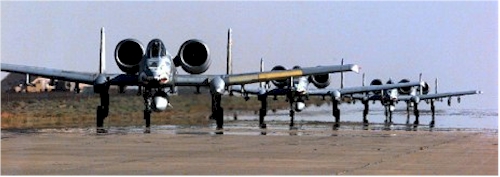
In a sense, the "Thunderbolt" had come home, as the original - the Republic P-47 "Thunderbolt" - was flown by the Flying Tigers in the late 1940s while stationed in the western Pacific.
In less than a year's time after accepting its new "Thunderbolt," the wing once again lived up to its tradition of excellence. The Flying Tigers captured top honors in 9th Air Force's tactical bombing competition, Gunpowder 1981, to advance to Tactical Air Command's Gunsmoke 1981 competition at Nellis Air Force Base, Nevada.
The Flying Tigers won six of nine events in Gunsmoke '81, including top maintenance and munitions awards, and was the top A-10 unit in the shootout. The 23d Tactical Fighter Wing reappeared in Gunsmoke competitions for the next eight years.
The wing's maintenance complex was awarded the 1981 Daedalian runner-up trophy and earned the 1984 Daedalian Aircraft Maintenance Trophy.
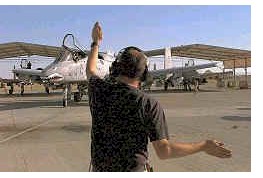 Air Force records were set by the wing for "mission-capable" and "fully mission-capable" rates during fiscal year 1985. The marks, 93.1 percent in mission-capable, and 92.8 percent in fully mission capable, topped records set by the wing in 1981, 1982, 1983 and 1984. Mission-capable means an aircraft can meet any mission tasking. Air Force records were set by the wing for "mission-capable" and "fully mission-capable" rates during fiscal year 1985. The marks, 93.1 percent in mission-capable, and 92.8 percent in fully mission capable, topped records set by the wing in 1981, 1982, 1983 and 1984. Mission-capable means an aircraft can meet any mission tasking.
Another milestone occurred in March 1984, when the wing received the last A-10A "Thunderbolt II" aircraft to be built by Fairchild Republic.
The wing won its fourth Air Force Outstanding Unit Award following Operation DESERT SHIELD/DESERT STORM for the period April 1, 1989, to March 31, 1991.
Operations DESERT SHIELD & DESERT STORM
The wing continued to build on its outstanding tradition of service and readiness as its 74th and 76th Tactical Fighter Squadrons deployed with numerous support personnel to Saudi Arabia for Operation DESERT SHIELD in August 1990.
Assigned to King Fahd International Airport, the two squadrons were part of the largest A-10 deployment to date. Two squadrons from Myrtle Beach Air Force Base, South Carolina, one squadron from Naval Air Station, New Orleans, one squadron from RAF Alconbury, U.K. and a squadron of OA-10 forward air controllers from Davis-Monthan Air Force Base, Arizona, completed two provisional wings totaling 144 aircraft.
A-10s made their wartime debut with the start of Operation DESERT STORM on January 15, 1991. In this chapter of wartime service, the Flying Tigers flew more than 2,700 combat sorties over Iraq and Kuwait while maintaining a mission-capable rate of 95 percent.
The combined efforts of the A-10 units resulted in the confirmed destruction
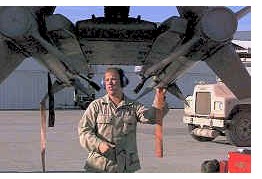 of 987 tanks, 926 artillery pieces, 500 armored personnel carriers, 1,106 trucks, 112 military structures, 96 radars, 72 bunkers, 57 SCUD missile launchers, 50 anti-aircraft artillery batteries, 28 command posts, 11 FROG missiles, 9 surface-to-air missile sites, 8 fuel tanks and 12 aircraft.
The 42-day war liberated Kuwait from Iraq's leader, Saddam Hussein, who invaded the small emirate on August 2, 1990. Both squadrons returned to England Air Force Base in late March to large crowds of supporters. Support personnel continued to arrive for months after the aircraft redeployment. of 987 tanks, 926 artillery pieces, 500 armored personnel carriers, 1,106 trucks, 112 military structures, 96 radars, 72 bunkers, 57 SCUD missile launchers, 50 anti-aircraft artillery batteries, 28 command posts, 11 FROG missiles, 9 surface-to-air missile sites, 8 fuel tanks and 12 aircraft.
The 42-day war liberated Kuwait from Iraq's leader, Saddam Hussein, who invaded the small emirate on August 2, 1990. Both squadrons returned to England Air Force Base in late March to large crowds of supporters. Support personnel continued to arrive for months after the aircraft redeployment.
In October 1990, it was determined that England Air Force Base would be closed by September 1992. A draw down of equipment and personnel began almost immediately. On October 1, 1991, the wing designation became 23d Fighter Wing and on November 1, 1991, the squadrons dropped "tactical" from their designations.
The Move to North Carolina
The Flying Tigers inactivated June 1, 1992, at England Air Force Base and were reactivated as the 23d Wing, part of a composite wing at Pope Air Force Base, North Carolina the same day. In addition to the move, the wing acquired a new aircraft, the C-130 "Hercules." The wing activation coincided with the activation of Air Combat Command, headquartered at Langley Air Force Base, Virginia.
In December 1992, C-130s from the 2nd Airlift Squadron deployed to Mombasa, Kenya, to participate in Operation PROVIDE RELIEF. The aircraft and crews delivered tons of food and other relief supplies to small airstrips throughout Somalia.
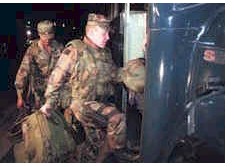 Flying Tiger C-130s have also been tasked to assist in other humanitarian relief efforts, to include Hurricane Andrew in Florida. They also air-dropped relief supplies into Bosnia-Herzegovina and flew relief missions into Sarajevo for more than 28 months. Flying Tiger C-130s have also been tasked to assist in other humanitarian relief efforts, to include Hurricane Andrew in Florida. They also air-dropped relief supplies into Bosnia-Herzegovina and flew relief missions into Sarajevo for more than 28 months.
In September 1994, Flying Tiger C-130s participated in what was to be the largest combat personnel drop since World War II, Operation UPHOLD DEMOCRACY. They were to assist in dropping more than 3,000 paratroopers from the 82nd Airborne Division onto Port au Prince Airport, Haiti. The invasion force was recalled at the last minute after word that the Haitian president had resigned upon hearing that the aircraft were on their way.
The 75th Fighter Squadron's A-10s were also involved in 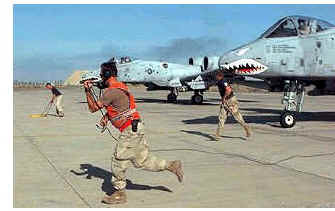 UPHOLD DEMOCRACY. The 75th deployed their aircraftto Shaw AFB, South Carolina, where they were
sched- uled to launch close air support operations for the invasion force before recovering in Puerto Rico. UPHOLD DEMOCRACY. The 75th deployed their aircraftto Shaw AFB, South Carolina, where they were
sched- uled to launch close air support operations for the invasion force before recovering in Puerto Rico.
The first operational deployment of a composite wing happened in October 1994, when Iraqi troops began massing near the Kuwaiti Border. Within 72 hours, 56 aircraft and 1,500 people deployed to the Arabian Gulf region for Operation VIGILANT WARRIOR. Eventually, the 75th Fighter Squadron redeployed to Al Jaber AB, Kuwait, becoming the first US fixed-wing aircraft to be stationed in that country since the end of the Gulf War.
The 23d Wing underwent another change with the departure of the F-16 Fighting Falcon from the 74th Fighter Squadron and the transition to a second squadron of A/OA-10 Thunderbolt IIs. In April 1997, the wing became a fighter group flying only A-10s and continued to prosecute the missions of Southern Watch in Southwest Asia on a regular rotation.
Operation ALLIED FORCE
In April 1999, the 74th Fighter Squadron deployed five aircraft and 60 personnel to Operation ALLIED FORCE, the NATO air campaign against the Federal Republic of Yugoslavia, nominally intended to stop ethnic cleansing of Albanians by Serbians. The US participation known as Operation NOBLE ANVIL ALLIED FORCE officially spanned March 24 through June 10, 1999.
Overall, the campaign was to stop the Serbian ethnic cleansing and the Flying Tigers were to aid in that effort. The 74th Fighter Squadron deployed initially to Spangdahlem Air Base, Germany, and then forward deployed to Gioia Del Colle Airbase, Italy. Desginated the 74th Expeditionary Fighter Squadron, the unit joined the 81st from Spangdahlem.
The A-10A aircraft provided close air support during flying missions over the area, sat alert along with the 81st for combat search and rescue missions and also provided Airborne Forward Air Control and worked with NATO fighters to employ on Serbian targets found in the Kosovo area.

[ Up ]
|
